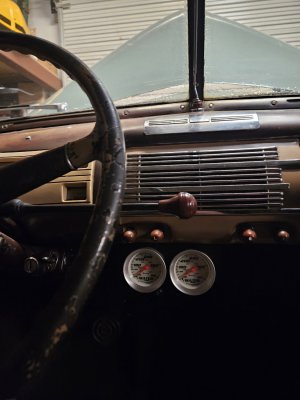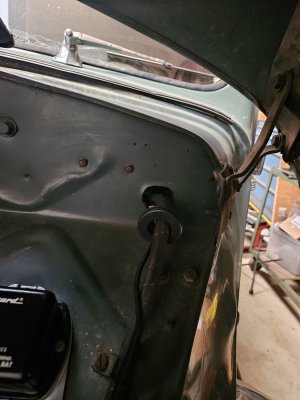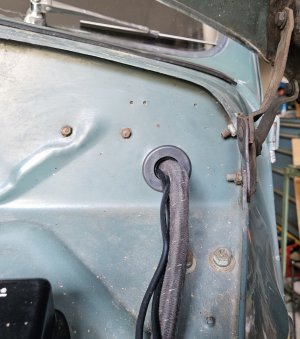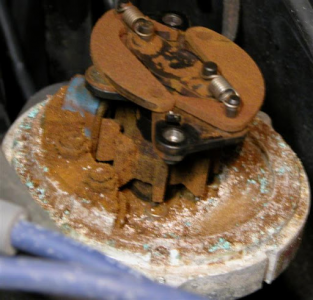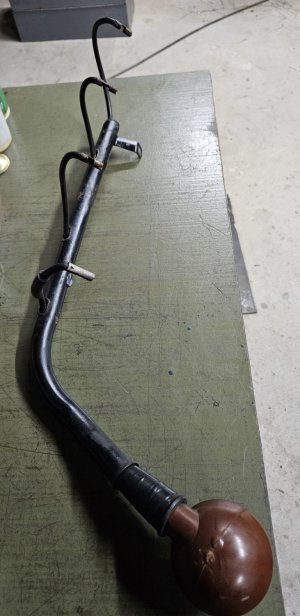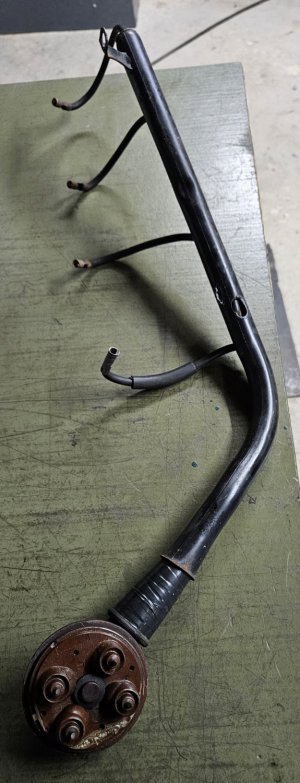I haven't updated this lately, so...
After finishing up the cooling system and mounting all four new wheels and tires, I fired the car up... I was all excited to see how it drove with the new rubber.
However... I couldn't get the car to run well enough to drive it... it was running very rich and was fouling the spark plugs. I replaced all the plugs with new Autolite 216s...
I hadn't done anything to the carburetor/ fuel system at all... so wth? After fooling with it for a couple of weeks, I decided probably the ethanol in the gasoline had taken its toll on the carburetor. I removed the carb and shipped it to a Holley 94 expert in New York for a rebuild.
It came back to me a couple of weeks ago, I finally found time to reinstall it yesterday. The car now runs much better, but still not very good...
So I started pulling the spark plugs one at a time and checking the compression on the cylinders. All 8 cylinders were within a couple of PSI of each other...
The plugs, however, told their own story. All four passenger side plugs (cylinders 1 thru 4) and cylinder 7 looked like this...
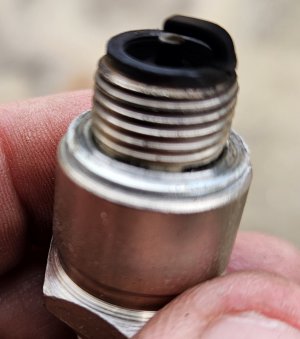
They obviously have some carbon fouling from when the engine was running very rich, but the fouling was starting to burn off around the gap.
Cylinders 5 and 6 looked like this...
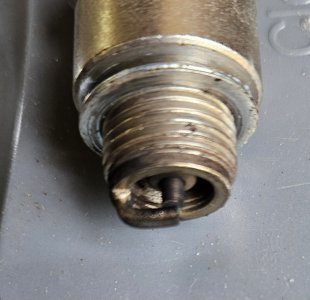
Very little carbon fouling on these, but they had obviously been working... at least somewhat...
Cylinder 8, however...
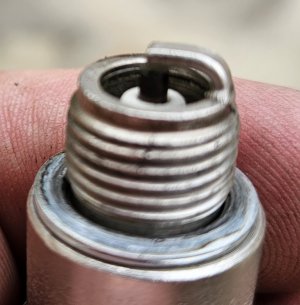
...looks like it was just pulled out of the box. A quick test verified plug number 8 is not getting any fire... none at all. I checked it with one of the old plugs to see if it was a bad plug, but the old plug wasn't firing, either.
Tomorrow, if I get time, I'll start checking for continuity between the distributor cap and spark plugs to see if the plug wires have issues. If the wires all check out, it just about has to be a distributor problem.
-Bear


